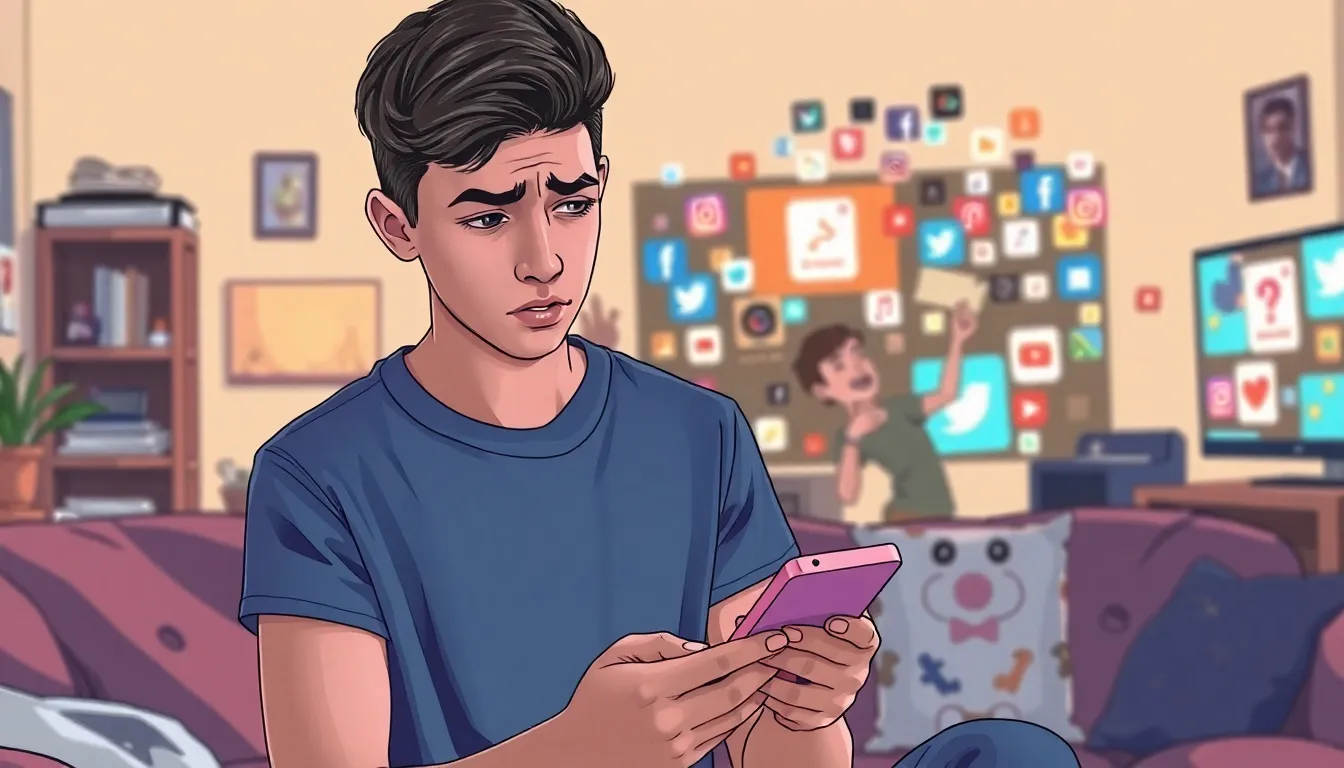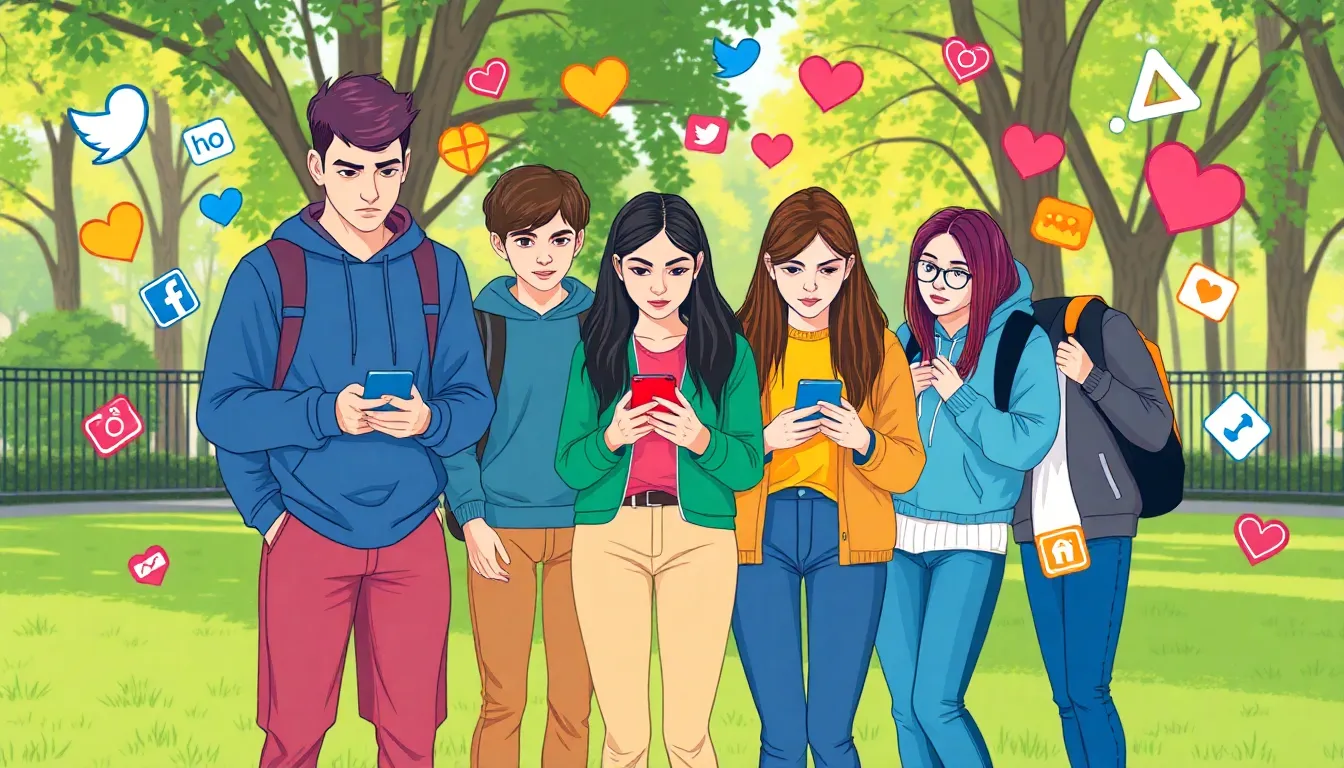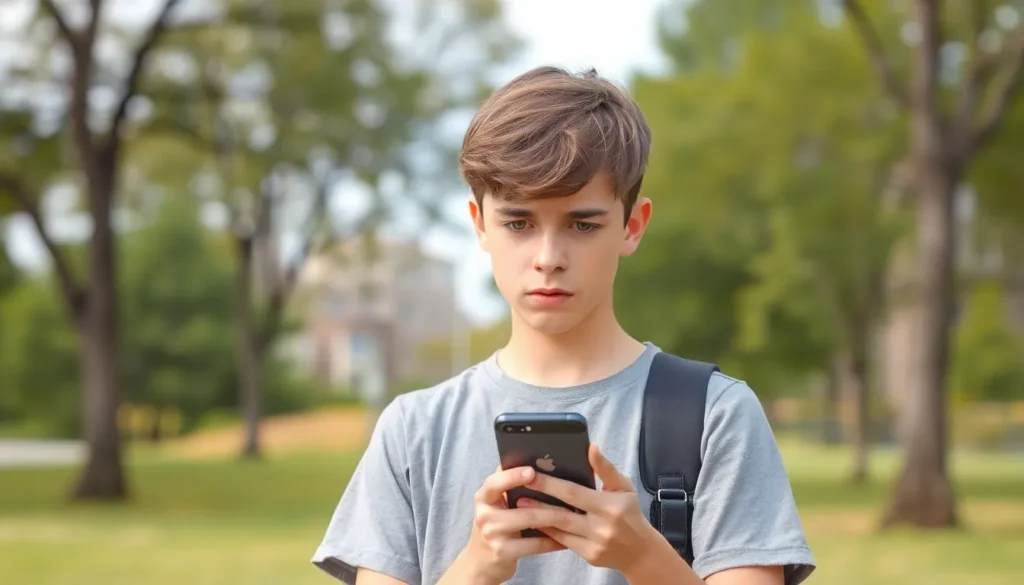Social media can feel like a wild carnival ride—thrilling, colorful, and occasionally terrifying. While it’s a great platform for connection and creativity, some trends pop up that make you wonder if the funhouse mirrors have warped reality a bit too much. From bizarre challenges that test the limits of common sense to viral dares that could land someone in the ER, the digital landscape isn’t always safe.
As influencers chase likes and shares, they sometimes forget the real-world consequences of their actions. It’s time to shine a light on these dangerous social media trends that could make even the most seasoned thrill-seeker think twice. Buckle up—it’s going to be a bumpy ride through the highs and lows of online crazes that might just leave you shaking your head in disbelief.
Dangerous Social Media Trends
Dangerous social media trends frequently attract attention, often leading users to engage in risky behaviors. These trends manifest in various forms, including challenges, dares, and other viral activities. Participating in these could result in severe injuries or even fatalities.
One notable example is the “Tide Pod Challenge,” where individuals consumed laundry pods, leading to numerous hospitalizations. Similarly, the “Bird Box Challenge” involved blindfolded individuals completing everyday tasks, resulting in accidents and injuries.
Online platforms consistently amplify these trends, spreading them rapidly. Social media algorithms promote sensational content, increasing the likelihood of engagement. Users may find it difficult to discern between acceptable and harmful trends, heightening the danger.
The influence of peer pressure can’t be underestimated. Many individuals, especially adolescents, follow popular trends to gain social acceptance, often disregarding personal safety. Research indicates that this behavior correlates with impulsivity, further complicating the issue.
Specific trends pose greater risks than others. For instance, “Planking” involved lying face down in public spaces, leading to falls from heights and serious injuries. “The Cinnamon Challenge” also gained notoriety, resulting in choking incidents.
Educational efforts are crucial in combating these harmful trends. Parents and guardians must engage in conversations with young users about online safety, emphasizing the potential consequences of their actions. Schools can implement programs that raise awareness about the risks associated with dangerous social media trends while promoting healthier alternatives.
Impact of Dangerous Social Media Trends


Dangerous social media trends significantly affect both mental and physical well-being. Users often underestimate these impacts, leading to serious repercussions.
Mental Health Consequences
Social media trends can trigger anxiety and depression. Increased pressure to participate in risky challenges can overwhelm individuals. Adolescents, in particular, experience heightened vulnerability due to their desire for acceptance. Constant exposure to harmful content fosters feelings of inadequacy and low self-esteem. Peer comparisons contribute further to these mental health issues. Research indicates that social media can exacerbate existing conditions, amplifying feelings of isolation and despair. Engaging in dangerous trends may provide temporary validation but ultimately harms mental health.
Physical Risks
Physical risks associated with dangerous social media trends are alarming. Many users face severe injuries or even fatalities while attempting viral challenges. Risks such as choking, falls, or accidents arise from reckless behaviors. For instance, the “Tide Pod Challenge” led to numerous hospital visits due to poisoning. Participants in the “Bird Box Challenge” encountered accidents while blindfolded. Users often ignore warnings and statistics related to these trends, prioritizing the need for attention instead. Emergency rooms frequently treat injuries stemming from such challenges, highlighting the seriousness of the issue.
Popular Dangerous Social Media Trends
Social media showcases various troubling trends that raise serious safety concerns. Risky challenges and misinformation frequently circulate, leading to dangerous outcomes.
Challenges and Dares
Challenges and dares often entice users to engage in reckless behavior. Social media users frequently post viral challenges that appear harmless but result in injuries. The “Tide Pod Challenge” serves as a prime example, causing numerous hospitalizations. Participants in the “Bird Box Challenge” faced accidents while blindfolded, illustrating the potential for harm. Adolescents easily succumb to peer pressure, sometimes prioritizing social acceptance over safety. Even seemingly innocent activities like “Planking” led to severe injuries due to misjudged stunts. Ultimately, each viral challenge poses a risk that users may overlook.
Misinformation and Hoaxes
Misinformation and hoaxes proliferate on social media, causing panic and confusion. False rumors about harmful substances or dangerous tasks often gain traction, misleading users. The spread of fake news can evoke unnecessary fear, prompting individuals to take misguided actions. Particularly alarming are the hoaxes surrounding health-related topics that impact public safety. As misinformation circulates, the lines between fact and fiction blur, compromising user trust. Addressing this issue requires vigilance and critical thinking from users to discern credible information.
Prevention and Awareness
Awareness and education play crucial roles in counteracting dangerous social media trends. Users, particularly young individuals, benefit significantly from understanding the implications of online activities.
Educating Young Users
Teaching young users about the consequences of participating in risky challenges is essential. Schools can implement programs that promote critical thinking regarding social media content. Incentives like engaging workshops can encourage students to examine trends critically. By discussing real-life incidents linked to dangerous trends, young users can better understand the risks involved. Equipping them with the skills to assess peer pressure enhances their decision-making capabilities. Parents and educators can collaborate to create a safer online environment for kids. Providing accessible resources raises awareness, empowering them to navigate social media responsibly.
Role of Parents and Guardians
Parents and guardians hold a pivotal role in monitoring and guiding online behavior. Open dialogues about social media experiences foster trust and understanding. Encouraging children to share their thoughts on trends cultivates a sense of responsibility. Active involvement in conversations about viral challenges promotes cautious engagement. Setting clear expectations regarding social media use can shape healthy habits. Additionally, utilizing parental controls and privacy settings helps safeguard young users from harmful content. Educating themselves about emerging trends keeps parents informed and prepared to address potential risks effectively. Together, they can reduce the likelihood of children participating in dangerous online activities.
Conclusion
Awareness and education are vital in combating the allure of dangerous social media trends. Users must recognize the potential risks and consequences associated with viral challenges. By fostering open conversations about online safety and encouraging critical thinking, parents and educators can empower young people to make informed decisions.
It’s essential to create an environment where individuals feel comfortable discussing their online experiences. This collaborative approach can significantly reduce participation in harmful activities. Ultimately, prioritizing safety and well-being over fleeting online fame can lead to healthier social media habits and a more positive digital landscape.
